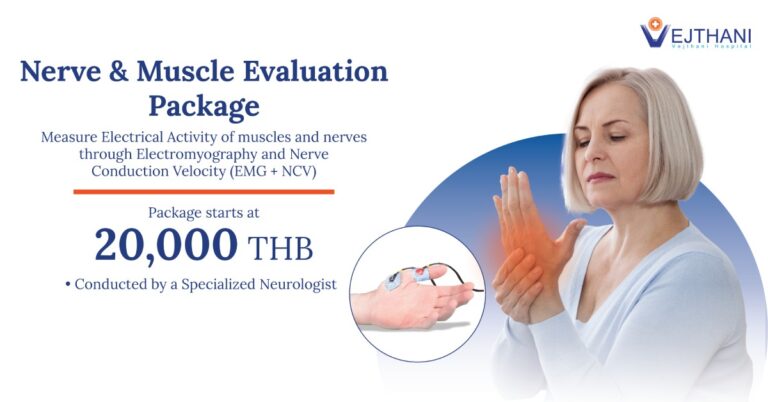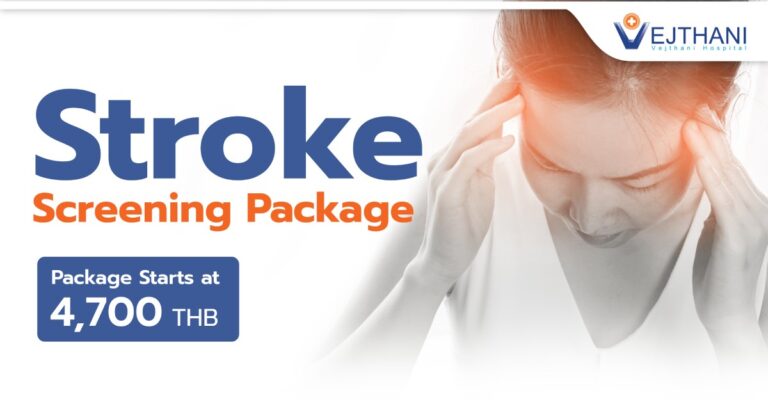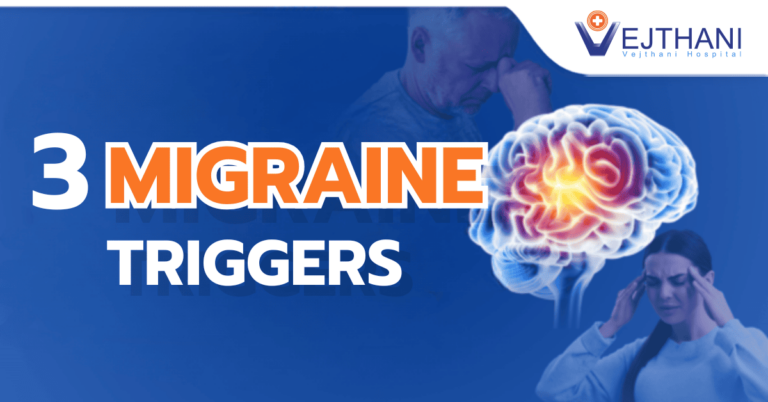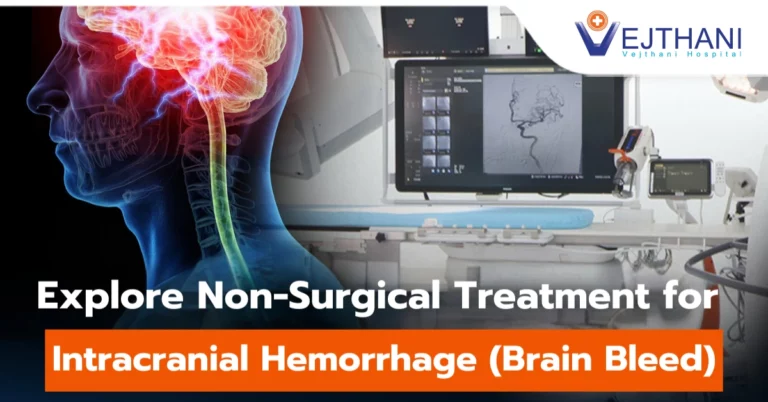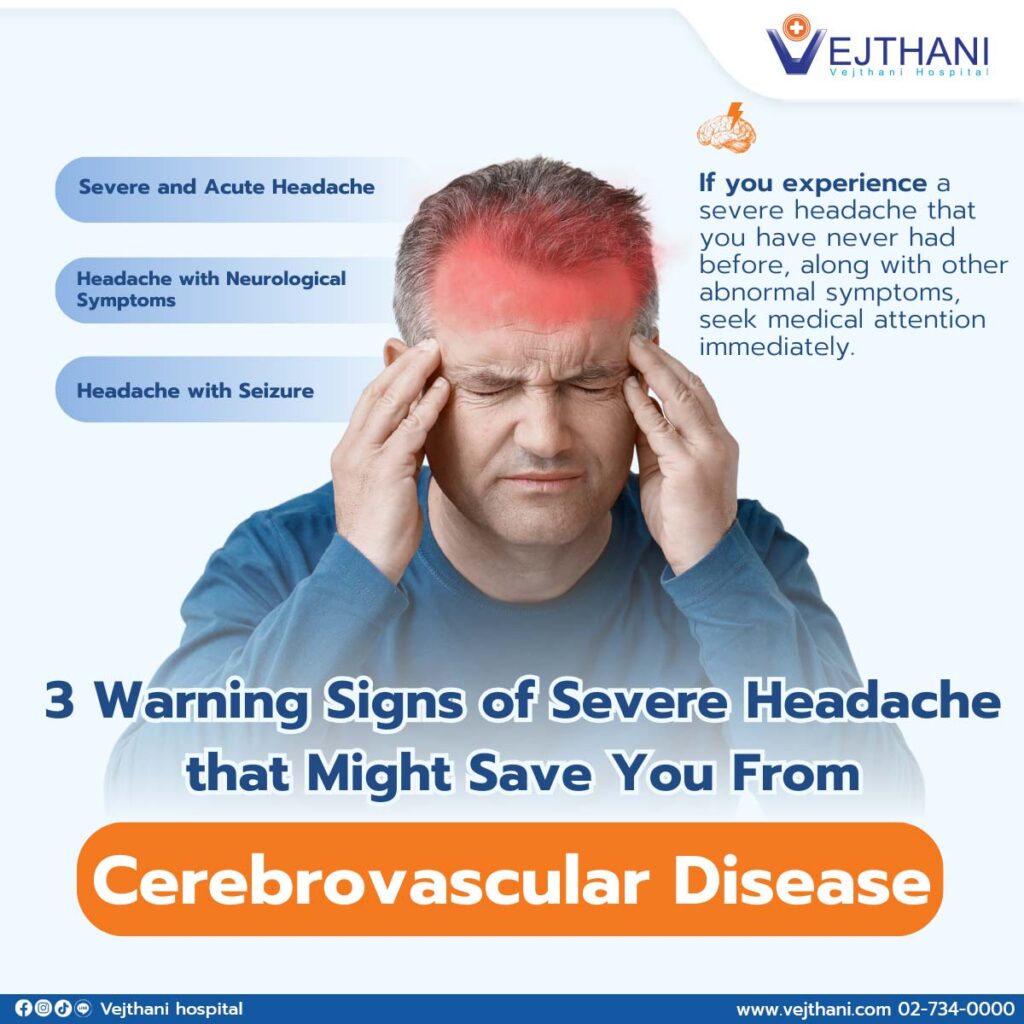

While it’s true that headaches are a prevalent symptom, with over 90% of patients seeking medical attention experiencing a common and non-serious form, it’s crucial to recognize that in a minority—around 10% of the remaining cases—even a mild headache, especially if it occurs for the first time, could serve as an indicator of a severe and potentially life-threatening condition, such as a stroke.
Warning Signs:
- Severe and Acute Headache. A sudden, intense headache that has never occurred before is likely triggered by an abrupt increase of pressure in the brain because of bleeding.
- Headaches with abnormal neurological symptoms, such as weakness in the arms and legs, facial drooping, slurred speech, dizziness, imbalance, and double vision, can indicate abnormal brain function. If they occur suddenly, it could be a sign of stroke.
- Headache with Seizure. Seizures are common signs of narrowed or ruptured blood vessels in the brain. It happens when the body secretes more neurotransmitters that stimulate seizures than neurotransmitters that inhibit seizures. Seizures and abnormal blood flow can lead to headaches.
Cerebrovascular disease can be caused by:
- Blood clots forming in the brain’s blood vessels (thrombosis)
- Blood clots traveling to the brain from other parts of the body (embolism)
- Blood vessels rupture (hemorrhage)
- Arterial plaque buildup (atherosclerosis)
- Inherited blood vessel issues
- Traumatic Brain Injury
Who is at Risk of Cerebrovascular Disease?
Individuals of any gender, age, or race could be affected. Some people face a higher risk due to uncontrollable factors, such as age or biological sex.
Diagnosis
If your doctor suspects cerebrovascular disease, they may use various diagnostic tests to pinpoint the problem and guide treatment.
Imaging tests:
- Cerebral angiography: X-rays of blood vessels in your brain using a special dye.
- Coronary computed tomography angiogram (CTA): Detailed 3D images of your heart and blood vessels to assess blockages.
- MRI (magnetic resonance imaging): Detailed images of your brain and blood vessels to identify abnormalities.
Other tests:
- Electrocardiogram (EKG): Measures your heart’s electrical activity to detect potential arrhythmias.
- Spinal tap (lumbar puncture): Analyzes cerebrospinal fluid to rule out other conditions.
Treatment
The path to recovery depends on your specific type and severity of cerebrovascular disease. However, the primary goal is to restore blood flow to your brain and prevent further damage. Treatment options may include:
Medications:
- Blood pressure medications: Lower blood pressure and reduce the risk of stroke.
- Blood thinners (anticoagulants): Prevent blood clots from forming or growing.
- Cholesterol-lowering drugs: Reduce bad cholesterol levels to prevent plaque buildup.
- Blood sugar medications: Manage diabetes and prevent related complications.
Surgery:
- Carotid angioplasty: Opens narrowed arteries using a balloon-tipped catheter.
- Carotid endarterectomy: Removes plaque buildup from blocked arteries.
- Carotid stenting: A stent is placed in the artery to keep it open.
- Catheter-directed mechanical thrombectomy: Removes blood clots directly from clogged arteries.
Keep in mind that timely diagnosis and swift treatment are essential for effective management of cerebrovascular disease. If you experience a severe headache that you have never had before, along with other abnormal symptoms, seek medical attention immediately, as it could be a warning sign of a stroke that may lead to a life-threatening condition.
- Readers Rating
- Rated 3.7 stars
3.7 / 5 ( Reviewers) - Very Good
- Your Rating























